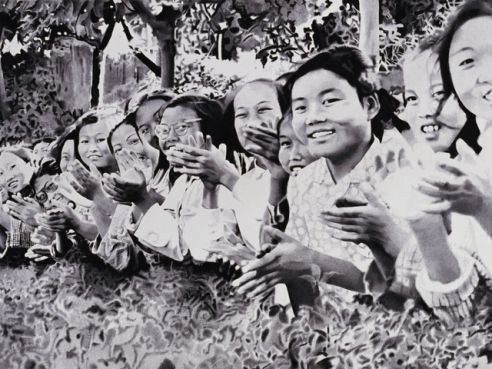
Gérard Gasiorowski: The Approach ..., 1970
Ludwig Museum - Museum of Contemporary Art
East of Eden / Photorealism: Versions of Reality
Photorealism as a Cold-War phenomenon
14 September 2011-15 January 2012
Ludwig Museum - Museum of Contemporary Art
1095 Budapest, Komor Marcell u. 1.
Hungary
T +36 1 555 3444
info@ludwigmuseum.hu
www.ludwigmuseum.hu
Open:
Tuesday-Sunday: 10.00-20.00 /
Closed on Mondays
Photorealism came into its own at the end of the 1960s, arising from the challenge posed by photographic depiction to realist painting, and is mostly associated with well-known American and Western European artists and their works. The Budapest Ludwig Museum exhibition expands the scope of earlier shows in Vienna (MUMOK, 2010) and Aachen (Ludwig Forum für Internationale Kunst, 2011), both of which included materials from the Ludwig's collection. Our exhibition offers new approaches to similar Central- and Eastern European tendencies by virtue of a complex interpretation of Cold War realism.
True-to-life photographic representation and analytical depiction also found followers on the Eastern side of the Iron Curtain, although not in the same measures or with the same convictions as in the West. The different political and cultural contexts, the long-standing historical tradition of realism and the lack of an art market or consumer culture meant that Central and Eastern European photo-based realism faced fundamentally different perspectives.
Despite the relative ideological unity of Soviet bloc countries, photorealism in its various incarnations contributed, on the one hand, to a reclaiming of the realist depiction mode from Socialist Realism, while at the same time being a useful means for veiled social criticism, since the censors could hardly object to its unambiguous everydayness. Photorealism's standard themes also opened up new possibilities for symbolic interpretation which, using the analogy of reading between the lines, allowed viewers to see behind the pictures. In the former Socialist countries, consumerist desires abandoned in the midst of economies of shortage, mass communications rendered difficult by state control and economic embargo alike, discourses confined to the private sphere, and the process of making visible the slow compromise with soft dictatorship mobilized the technical devices of painting in a different way from American and Western European works also on show in the exhibition.
The exhibition deliberately shifts our expectations of style, and discusses the extended understanding of photorealism as a terminus to allow us to appreciate parallels and dissimilarities, and the various aims and intentions, rather than merely placing works in competition with one another or listing influences. In doing so, the aim is to explore traces of the recent past that remain, albeit in more transient form, with us today.
Curated by Nikolett Eross
Artists in the show include:
Robert Bechtle, William Beckman, France Berko Bercic, Bernáth(y) Sándor, Milan Bockay, Corneliu Brudascu, John Clem Clarke, Chuck Close, Robert Cottingham, Csernus Tibor, Milutin Dragojlovic, Don Eddy, Richard Estes, Halina Eysymont, Jadranka Fatur, Fehér László, Julián Filo, Gérard Gasiorowski, Franz Gertsch, Ralph Goings, Ion Grigorescu, Tadeusz Grzegorczyk, Jean Olivier Hucleux, Kelemen Károly, Konrad Klapheck, Kocsis Imre, Lukasz Korolkiewicz, Ewa Kuryluk, Lakner László, Matei Lazarescu, Richard McLean, Méhes László, Méhes Lóránt, Franc Mesaric, Jacques Monory, Malcolm Morley, Lowell Nesbitt, Nyári István, Theodor Pitek, Sigmar Polke, Stephen Posen, Gerhard Richter, Veronika Rónaiová, James Rosenquist, Mimmo Rotella, Andrzej Sadowski, John Salt, Ben Schonzeit, Paul Staiger, Andrzej Strumillo, Andrzej Szumigaj, Andrzej Tryzno, Gerd Winner
The exhibition has been realised in collaboration with: Museum Moderner Kunst Stiftung Ludwig Wien and Ludwig Forum für Internationale Kunst, Aachen
The main sponsor of the Museum is Mastercard.
Supported by: Peter und Irene Ludwig Stiftung, Aachen, Uniqa Insurance Company, National Cultural Fund, Hungary
Educational programs are supported by Raiffeisen Bank.